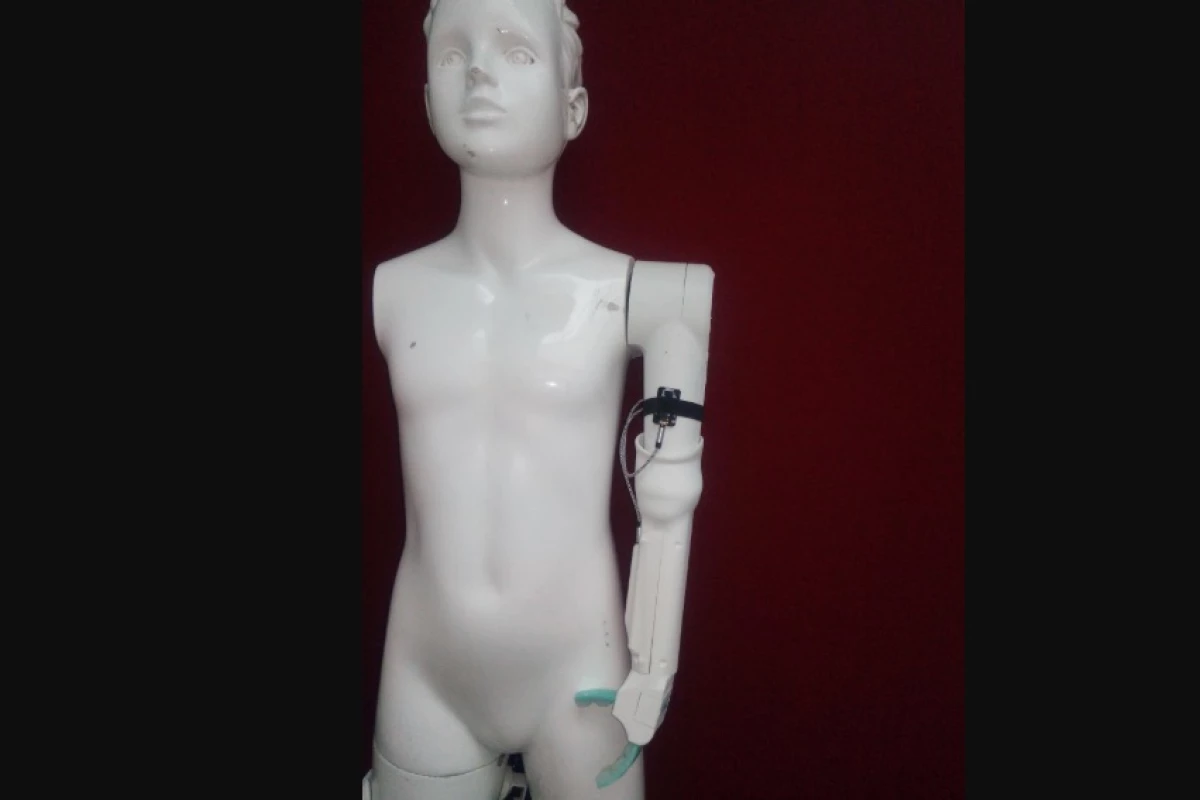Given that parents are already reluctant to buy fancy clothes that their small child will soon outgrow, then it follows that they would really question buying their amputee toddler a high-tech prosthetic arm. A new prosthesis, however, could prove to be inexpensive and user-friendly.
Led by Dr. Khaled Goher, a team at Britain's University of Lincoln has developed the prototype device, which is claimed to be "the first 3D-printed, sensor-operated prosthetic arm designed for toddlers under two years old." It's called SIMPA, or Soft-Grasp Infant Myoelectric Prosthetic Arm.
The setup incorporates an armband which is worn on the residual arm stump. Hard-wired to the prosthetic arm itself, that band utilizes an array of sensors to detect electrical signals generated by the stump muscles. Those signals are translated into commands for the arm's two-fingered gripper, allowing it to be used to pick up and release objects.
In order to train children which muscle movements are required – and to attune the prosthesis' microcontroller to each user's unique physiology – simple games could be used. The prototype has already successfully been used to grasp objects such as toys, bottles and building blocks.
Because SIMPA is 3D-printed, it should be relatively cheap to replace as the child grows. Additionally, because the customized shape of its socket is determined via a 3D scan of the child's stump, there's no need for the usual plaster casting process required for the production of traditional prostheses.
What's more, because it's lighter than other prosthetic arms, SIMPA should be more readily accepted by toddlers. This is an important consideration, as the researchers state that the earlier in life a child is introduced to a prosthesis, the less likely they are to reject it as being too cumbersome.
"Many traditional active prosthetics are unsuitable for toddlers as they are very time-consuming to construct and heavy," says Goher. "Our proposed system would utilize a seven-channel pediatric armband with motion sensors, allowing infants to benefit from and become familiar with active prosthetics."
Source: University of Lincoln




